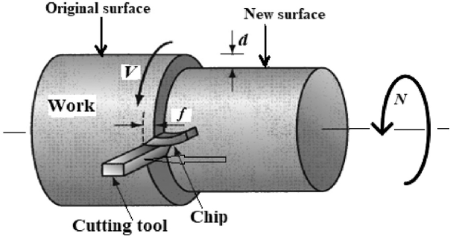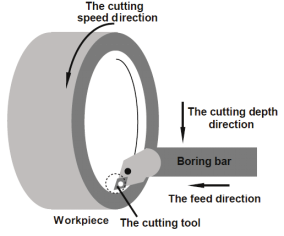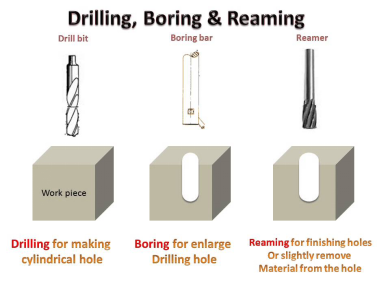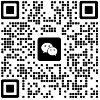Turning vs Boring: Differences and Applications in Machining
 Feb 13,2025
Feb 13,2025
 1146
1146
In the manufacturing industry, turning and boring are the common machining processes used for material removal from workpieces. Both can be utilized on a variety of materials like wood or metal for reshaping. These can be used for a lot of common procedures; however, these are not necessarily the same processes. This article will help you to find out the difference between turning and boring and their suitable applications.
What Is Turning?
It is a static and non-rotating cutting tool used for material removal from the outer surface of an object. The cutting tools normally have small blades which removes material uniformly. In this way, it reduces the sizes of material and reshapes it.

Materials Typically Used in Turning
A variety of materials can be used in precision turning such as metal (steel turning, stainless steel, aluminum, copper, brass, cast iron etc.), composites (carbon fiber, glass fiber) and polymers (PP, PC, nylon and many more)
What Is Boring?
Boring is another machining procedure that has static and non-rotating cutting tools for material removal. Boring removes material from inner surface. It has cutting tools same as drill bit and is specifically used for drilling hole.

Types of Boring Machines
Boring machines are of many types. These are horizontal, vertical, jig, floor, table-type, CNC, and coupling machines, Jig and CNC are used for precision parts to enlarge holes at accurate placements.
Boring Process Step by Step
Boring procedure is explained below:
- Boring starts with identifying the location to be bored and determine the best procedure for boring based on requirements
- Machine calibration is carried out such as spindle speed, alignment or feed rate etc.
- Appropriate cutting tool is selected based on material selection and hole size and is installed on machine and adjusted
- Boring begins with gradually increasing feed rate and removing material in controlled manner
- After boring, hole is inspected thoroughly to check final dimensions and surface finish
Applications for Boring in Metalworking
In metalworking, it is utilized to enlarge existing bore holes. It is used to get higher accuracy in applications like engine blocks, repairing large machinery, and for parts used in aerospace.
Benefits of Turning and Boring
Turning Process
- It is a flexible process in terms of material selection. Any material can be used metal or alloys, plastic, wood or composites.
- Parts can be created with very high tolerances in precision turning. It offers great surface finish which gives advantage of adding precision parts rotation feature to components.
- Precision Turning is a fast process and can create complete order in short time.
- Handling turning Lathe machine is easy and does not require any special training or skilled labour.
Boring process
- Tight tolerance and precision parts can be achieved in bore holes.
- Boring produces smooth finish of holes and increase part's performance.
- It is overall a versatile process. Internal can be produced as well as existing holes can be enlarged to various size without compromising part's performances.
- It can be integrated with CNC machines for automation and precision parts.
- Complex parts and intricate geometries can be created
- Boring has efficient removal process and chips an be removed from hole in heavy amount easily
Drawbacks of Turning and Boring
Turning process
- Only parts that can rotate can be used in precision tuning. It implies part size is limited in turning
- It is normally used in conjunction with other methods and require more than one machine to complete the process.
- Machines are expensive and if CNC is added, the cost of equipment is extremely high.
- Tool wear occurs frequently due to repeatable motion of tools
Boring process
- Machines are prone to tool deflection. Careful setting and tool selection is required in deep hole processing.
- It is not suitable for enlarging blind bore holes due to tapered bottom of holes
- It requires proper training or skilled labour for quality control
- Tool and machine wear occurs frequently due to repetitive motion of tools
- It is time consuming process and require a proper time to setup the machines.
- Accuracy can be affected due to constant vibration during boring.
What is the Difference Between Boring and Turning?
Major difference between boring and turning are explained below
Conceptual Differences
The key difference between these procedures is boring is used for removal material from the internal surface. Turning, however, is used for the outer surface to create cylindrical shape
Material Removal Techniques
Boring removes material from internal surfaces and also used to enlarge existing holes. Turning is for material removal of outer surface
Precision and Surface Finish
Boring provides precision and smooth surface finish of inner side of holes. Turning provides overall smooth surface finish and precision of parts
Chart of Difference Between Boring and Turning
|
Features |
Boring |
Turning |
|
Processing size |
Good for small parts |
Suitable for any size |
|
Material removal |
Removes material from inside |
Removes from the outside |
|
Workpiece orientation |
Cutting tool moves along its axis |
Cutting tool moves parallel to axis |
|
Machine type |
Lathe machine |
Horizontal, vertical, jig, floor, table-type, CNC, and coupling machines |
CNC Turning vs CNC Boring: What's the Difference?
CNC Turning Process
Turning is controlled by an automated CNC machine. Cylindrical parts are created in CNC turning which have uniform and precise holes.
CNC Boring Process
CNC boring enlarges the existing holes with higher tolerances. Holes have smooth surface finish and uniform diameter with higher accuracy
When to Use Turning vs Boring in Your Machining Project
Turning for External Features
Lathe machine perform steel turning though, it can be performed manually. workpiece is held tightly in machine which starts rotating and being pressed at the same time against the cutting tool to create cylindrical shape
Boring for Internal Features
Boring is preferred when precise alignment is required and for enlarging accurately the drilled hole with smooth finish.
Workpiece Orientation and Size Considerations
Boring is suitable for small parts and the workpiece can be placed horizontally and vertically depending on machine type. Turing is suitable for all sizes and the workpiece is parallel to cutting tools in Lathe
Horizontal vs. Vertical Positioning of Workpieces
In boring, horizontal machines have horizontally oriented spindle and vertical machines move up and down to cut surface. Floor boring is used for large parts and table types are fixed or movable cutting tools move horizontally and have fixed workpiece.
Metal and Plastic Material
Both are suitable for all types of materials like metal and alloys, plastics, composites, and plastics. The commonly used materials are steel, aluminum boring, titanium machining, PVC, POM, and PEEK for both the processes.
Applications for Turning and Boring
Turning:
- in Automotive industry for Crankshafts, wheel hubs and axles
- for aerospace parts of steel turning like engine landing gear part and turbine blades
- Machinery parts like gears or pulleys
- For medical implants like joint replacements in titanium machining
Boring:
- For engine parts like cylinder bores or connecting rods for aluminium boring
- Hydraulic parts like barrels or piston bores
- For Bearing housing
- For aerospace parts such as Internal holes in engine parts
Boring VS Reaming: What's the Difference?
These are machining processes to create holes in a workpiece. But boring creates rough holes and reaming provides smooth finish to holes
Difference Between Boring and Drilling
Drilling creates new holes from scratch. Boring enlarges an existing hole,
Table of Boring VS Reaming VS Drilling
|
Features |
Boring |
Reaming |
Drilling |
|
Procedure |
Enlarges holes |
Finishes the hole |
Create new holes |
|
Machine type |
Vertical, horizontal, jig or CNC |
tapered, stub, helical, and manual reamers. |
Hand drill and powered drill |
|
Material removal rate |
Less than drill |
Least |
Highest rate |

Precision Boring and Turning Services from Tuofa
Tuofa offers one of the finest services of precision boring and turning in China with low-cost manufacturing and on-time delivery services. We have CNC CNC lathe machine and milling machine services for prototypes and low to high volume production.
Conclusion
Boring and turning are machining procedures for material removal. Turning creates cylindrical shapes with lathe machine. Boring creates holes from the inner surface and also enlarges existing holes. Both offer smooth finishes and higher accuracy for tight tolerance parts.
 Tel/WeChat:
Tel/WeChat:  Email:
Email: 

 German
German French
French Spanish
Spanish Russian
Russian Arabic
Arabic Norwegian
Norwegian Dutch
Dutch Finnish
Finnish Japanese
Japanese Chinese (Simplified)
Chinese (Simplified) Home
Home
 Drilling vs Boring vs Reaming: What's the Difference?
Drilling vs Boring vs Reaming: What's the Difference? 







